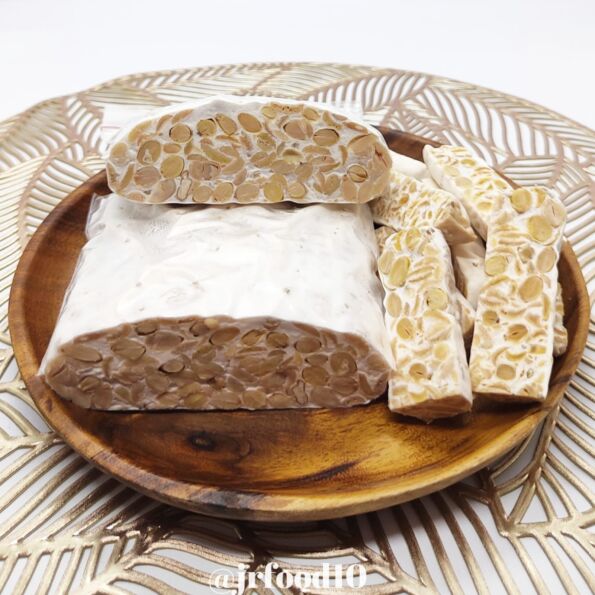
How to Make Tempeh from Scratch

So, you've decided to take the plunge into the magical realm of homemade tempeh, huh? Buckle up JRFoodies, because we're about to turn those humble soybeans into a culinary masterpiece. Imagine the satisfaction of crafting your own tempeh from scratch, waving goodbye to store-bought mediocrity and saying hello to a burst of homemade goodness in every bite.
But hey, making tempeh isn't just about tossing a few ingredients together – it's a journey, a process, a bit like coaxing a flavor genie out of a soybean lamp. And lucky for you, we've got the enchanted recipe to unlock that genie, along with some insider tips and tricks. Let's go get em!
Join the recipe party and explore dishes that will have you saying, 'Why haven't I tried this before?'
Imagine biting into a slice of homemade tempeh—there's a delightful contrast between the crisp outer layer and the tender, nutty core. The flavors? Well, they're a symphony of earthiness with a hint of umami goodness. It's like nature's own savory treat, with the soybeans taking center stage, and the tempeh yeast and rice flour adding subtle notes that dance on your palate.
- 200gr soybean
- 1 gr tempeh yeast
- 1 tbsp rice flour
- Water to soak and boil
Begin by soaking the soybean overnight. This critical step initiates the fermentation process that transforms simple soybeans into the beloved tempeh.
After soaking, wash the soybeans thoroughly, making sure all the skin is removed. Boil the soybeans for 30 minutes or use a pressure cooker for a quicker option.
After boiling, strain the soybeans and spread them evenly on a muslin cloth. Allow them to dry, ensuring that excess moisture is eliminated. This crucial step creates the ideal environment for the tempeh to thrive during fermentation.
Transfer the dried soybeans into a bowl and add 1 gram of tempeh yeast along with 1 tablespoon of rice flour. Stir the mixture well, ensuring that every soybean is coated.
Place the tempeh mixture into a plastic zipper bag or use banana leaves if available. Don't fill it to the brim; leave some space for proper air circulation during fermentation.
Using a toothpick, make small holes in all parts of the tempeh mixture. These holes are essential for allowing air circulation, a key factor in the fermentation process. Proper ventilation ensures that the tempeh develops its characteristic texture and flavor.
Let your tempeh rest at room temperature for 2 days. During this period, the magic happens as the tempeh transforms into a savory delight. Keep an eye on the progress, and you'll soon notice the white mycelium covering the soybeans – a sign that your tempeh is ready to move to the next stage.
Once the fermentation process is complete, transfer your tempeh to the refrigerator. This not only halts the fermentation but also enhances the flavor and texture of the tempeh.
Servings 2
- Amount Per Serving
- Calories 175kcal
- % Daily Value *
- Total Fat 6.9g11%
- Saturated Fat 0.8g4%
- Sodium 15mg1%
- Potassium 626mg18%
- Total Carbohydrate 17.3g6%
- Dietary Fiber 4.49g18%
- Protein 13.39g27%
- Calcium 198 mg
- Iron 4 mg
* The % Daily Value (DV) tells you how much a nutrient in a food serving contributes to a daily diet. 2,000 calorie a day is used for general nutrition advice.
- Ensure that you use high-quality, non-GMO soybeans for the best results. The quality of your soybeans will directly impact the flavor and texture of your tempeh.
- Throughout the process, maintain a clean environment and use sanitized utensils. This helps prevent the growth of unwanted bacteria and ensures a pure tempeh fermentation.
- Aim to keep the room temperature around 30°C (86°F) during the fermentation process. This temperature range is optimal for the growth of Rhizopus mold, which is essential for the fermentation of tempeh.
- If you notice excessive moisture or condensation inside the bag or wrapping, you may need to adjust the ventilation. Ensure that the tempeh has enough airflow by poking additional holes if necessary.